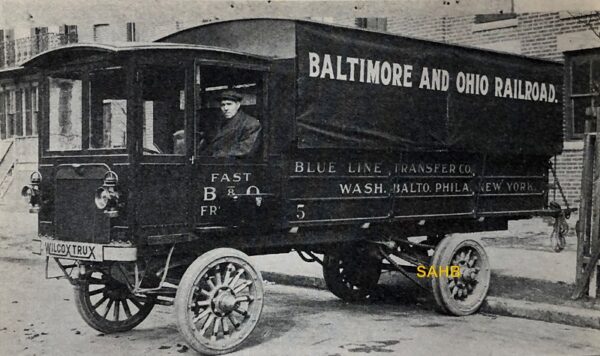
In the early 1900s many American mechanics were striving to create reliable motor cars. One such was Harry Eugene Wilcox, who talked his father, John, into financing a factory to build cars in Northeast Minneapolis, Minnesota.
John F. Wilcox came to Minneapolis in 1867, following his father into the manufacture of window sashes and doors to take advantage of the vibrant lumber trade in that city. His factory was destroyed in a fire in 1893, but he rebuilt it and his business prospered, employing over 200 men.
His son Harry was evidently fascinated by motor cars and started making them in the repair shop of his father’s factory in 1906. he used his father’s $100,000 investment to found the Wilcox Motor Car Company with his brother Ralph. He called his first car a Wolfe, after the salesman Maurice Wolfe who designed it. The car had a four-cylinder, 24-horsepower, air-cooled Carrico engine, a double chain drive and a 108-inch wheelbase. It cost $1,800. It had a 16-inch ground clearance, important when most roads were muddy and unpaved.
Wolfe left in 1909 to buy the Clark Motor Car Company in Ohio, and Harry Wilcox changed the name of the car to Wilcox. The company offered touring, baby tonneau, or “gentlemen’s roadster” bodies and the purchase price came down to $1,500. Fewer than 100 of the Wilcox cars were built.
But Harry started to build trucks, naming them Trux to give them some pizzazz. His father, seeing potential in this new direction, put up one million dollars to reorganise the company into the H.E. Wilcox Motor Car Company.
Harry was a consummate promoter. He was the first man to drive from Minneapolis to Chicago. He tirelessly promoted his products at auto shows around the nation and his advertising featured local companies that used Wilcox Trux.
Harry even arranged for a retired circus elephant to ride around Minneapolis in the back of a Wilcox truck. “The large beast tips the scales at 6,300 lbs. but he was a very easy load for the Wilcox truck in which he was given a ride through the Flour City,” reported Motor Body, Paint and Trim in 1911. “The elephant showed no fear of the truck and seemed to enjoy the trip as well as did the spectators and as an evidence of his almost human intelligence, it is said he showed a great fondness for Minneapolis beer and had to be treated repeatedly.”
By 1913, the date of our Snapshot, Wilcox was making three sizes of Trux: One-Ton, Two-Ton and Three-Ton. We show here a Two-Ton with van body; the chassis price was $2,500. Wilcox Trux were made until 1928.
Image courtesy of The Richard Roberts Archive: www.richardrobertsarchive.org.uk







Bachman’s Garden Center still has their 1919 truck and has owned it for 105 years.